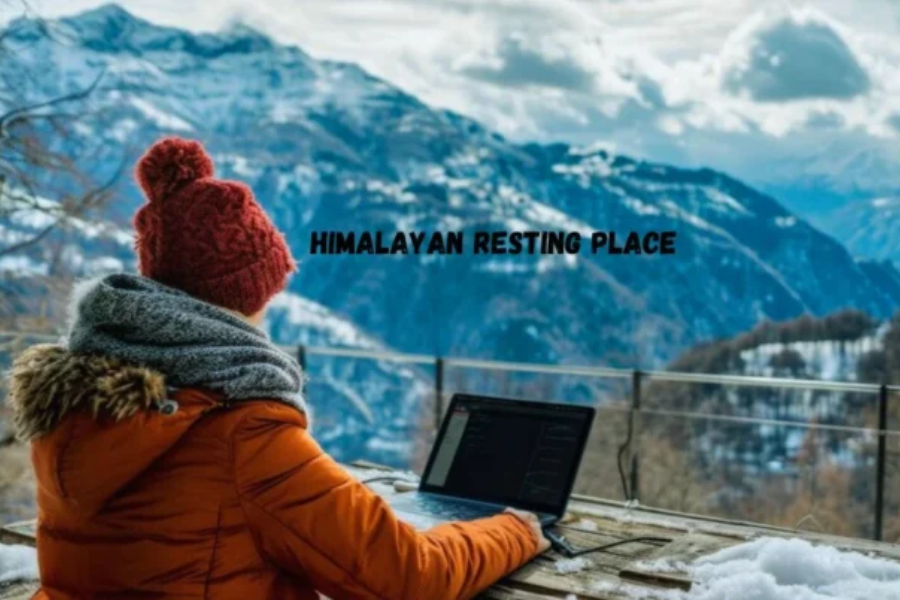Exploring Spiritual Oases: Himalayan Resting Places for Inner Renewal
Introduction
The Himalayas, frequently portrayed as the “residence of snow,” stretch across five nations — Bhutan, China, India, Nepal, and Pakistan — framing a stunning scene that has entranced pioneers, explorers, and swashbucklers for quite a long time. At the core of this glorious mountain range lies the idea of the Himalayan resting place, both a figurative safe-haven and an actual objective contribution comfort, isolation, and a significant association with nature and otherworldliness. This article digs into the appeal and meaning of these resting places, investigating their social, otherworldly, and natural significance in the midst of the sensational setting of the Himalayas.
The Himalayas: An Embroidery of Culture and Nature
Regular Wonder
The Himalayas brag a portion of the world’s most elevated tops, including the transcending Mount Everest at 8,848 meters (29,029 feet). Past their stunning levels, these mountains go about as a characteristic hindrance fundamentally impacting the environment, culture, and biodiversity of the locales they length. From the verdant valleys of Bhutan to the rough levels of Tibet, the Himalayas include different biological systems that help a rich embroidery of life.
Social Mixture
Socially, the Himalayas are a mixture of dialects, customs, and religions. Buddhist cloisters stick to cliffsides in Bhutan and Tibet, while Hindu sanctuaries dab the Indian Himalayan scene, representing human versatility and otherworldliness entwined with the rhythms of the mountains. Every people group contributes an exceptional lifestyle formed by the loftiness of their environmental factors.
The Idea of the Himalayan Resting Spot
A Safe-haven for the Spirit
The possibility of a Himalayan resting place goes past its topographical area. It represents a safe-haven where people look for comfort and otherworldly reestablishment in the midst of the magnificence of the mountains. Frequently remote and testing to get to, these safe-havens typify the conviction that genuine harmony and illumination require both a physical and otherworldly excursion.
Authentic Importance
By and large, the Himalayas have drawn in travelers looking for otherworldly edification. Excursions to these resting places include navigating rough territories, representing an internal mission to beat individual impediments and accomplish higher cognizance. Many destinations are saturated with legend and fantasy, upgrading their enchanted charm through the ages.
Current Journeys
In contemporary times, the charm of Himalayan resting places reaches out past otherworldly searchers to swashbucklers and sightseers looking for relief from present day burdens. These safe-havens offer a special mix of peacefulness and experience, drawing a different cluster of guests who come to restore in the midst of unblemished mountain conditions.
Conspicuous Himalayan Resting Spots
Lumbini, Nepal
Lumbini, the beginning of Siddhartha Gautama, later known as Buddha, stays as one of the Himalayas’ most colossal significant resting places. Arranged in Nepal’s Terai fields, this UNESCO World Heritage site yearly draws tremendous number of trailblazers. The Maya Devi Asylum, signifying Buddha’s starting point, overflows quietness amidst serene nurseries and shelters from various Buddhist nations.
Rishikesh, India
Coordinated along the blessed Ganges Stream in Uttarakhand, Rishikesh is regarded as the “Yoga Capital of the World.” It fills in as a center point for extraordinary new development and genuine wellbeing through yoga and reflection. Enclosed by slants and woodlands, Rishikesh has different retreats and ashrams where visitors lower themselves in chips away at empowering internal concordance and care.
Paro Taktsang, Bhutan
Paro Taktsang, or the Tiger’s Home Strict people group, stays as maybe of Bhutan’s most well known and consecrated site. Perched earnestly 900 meters over the Paro Valley, it is acknowledged Expert Rinpoche contemplated here in the eighth 100 years, making the trip to this strict local area an excursion in itself. The elevated ascension rewards visitors with astounding vistas and critical quietness.
Dharamsala, India
Gotten comfortable Himachal Pradesh, Dharamsala fills in as the home of the Dalai Lama and the Tibetan government in expulsion. An undeniable focal point of Tibetan Buddhism, Dharamsala attracts significant searchers and tourists the equivalent. Its different reflection territories and strict networks offer a clear inclusion with Tibetan extraordinary quality against the stunning foundation of the Dhauladhar mountain range.
The Excursion to the Himalayan Resting Spots
Actual Difficulties
Getting to Himalayan resting places includes exploring rough landscapes, crossing high mountain passes, and persevering through eccentric atmospheric conditions. The actual excursion fills in as a long term hardship and flexibility, reflecting the inward excursion towards inward harmony and edification.
Otherworldly and Close to home Change
The actual trip matches an internal change. Explorers go up against individual cutoff points and fears along mountain ways ideal for contemplation and self-revelation. Accomplishing these safe-havens cultivates a feeling of achievement interlaced with significant otherworldly arousing and recharging.
Natural Effect
While guests carry financial advantages to nearby networks, they likewise present dangers to the sensitive Himalayan environment. Reasonable the travel industry rehearses are vital for safeguard these destinations’ normal excellence and social legacy, guaranteeing they stay unblemished for people in the future.
The Fate of Himalayan Resting Spots
Adjusting The travel industry and Protection
Developing prevalence as a movement objective requires a cautious harmony among the travel industry and protection endeavors. Eco-accommodating facilities, squander the executives drives, and local area based the travel industry projects mean to limit natural effect while advancing supportable turn of events.
Social Protection
Saving Himalayan social legacy is fundamental in the midst of raising the travel industry. Maintaining nearby practices, specialties, and dialects defends these locales’ extraordinary personality and guarantees their sacredness as social and profound center points.
The Job of Innovation
Innovative advances upgrade openness to remote resting places. Further developed foundation and correspondence networks improve guest encounters while enabling nearby networks monetarily. Be that as it may, alert is fundamental to keep mechanical improvements from compromising these locales’ normal and social honesty.
Facts:
Geographical Diversity: The Himalayan resting places are located across diverse terrains, from lush valleys to stark plateaus, each offering a unique backdrop for spiritual journeys.
Cultural Heritage: They are hubs of cultural diversity, hosting Buddhist monasteries in Bhutan and Tibet, and Hindu temples in India, reflecting centuries of spiritual traditions.
Historical Significance: Many of these places have historical significance, attracting pilgrims for centuries in search of enlightenment and inner peace.
Natural Beauty: The Himalayan resting places are known for their pristine environments, offering tranquility amidst some of the world’s highest peaks and deepest valleys.
Conclusion:
The concept of the Himalayan resting place embodies more than geographical location; it symbolizes a sanctuary where individuals embark on journeys of spiritual and emotional transformation. These places have historical and cultural significance, attracting pilgrims, adventurers, and tourists alike. They present challenges of physical endurance and offer opportunities for profound introspection amidst awe-inspiring natural landscapes.
FAQs:
What are Himalayan resting places?
Himalayan resting places refer to spiritual sanctuaries located amidst the Himalayan mountain range, renowned for their natural beauty and cultural significance. They include sites like Lumbini in Nepal, Rishikesh in India, and Paro Taktsang in Bhutan.
Why are Himalayan resting places significant?
These places are significant for their historical and cultural heritage, attracting pilgrims and spiritual seekers seeking solace and enlightenment. They offer a blend of tranquility, adventure, and spiritual growth amidst stunning natural landscapes.
What is the journey like to Himalayan resting places?
The journey involves navigating rugged terrains, crossing high mountain passes, and enduring unpredictable weather conditions. It parallels an inner journey of spiritual and emotional transformation, testing endurance and resilience.
How do Himalayan resting places impact the environment?
While they bring economic benefits through tourism, they also pose environmental challenges. Sustainable tourism practices are crucial to preserve their natural beauty and cultural integrity for future generations.
How can one prepare for a visit to a Himalayan resting place?
Visitors should be prepared for physical challenges such as high altitude and varying weather conditions. Respect for local customs and traditions is essential, along with a commitment to sustainable travel practices.
Dive deep into Germany’s politics, culture, and economy on GermanyTribune.com.






